Swordfish steaks offer a delicious meaty texture that’s perfect for grilling, baking, or pan-searing. This firm, mild-flavored fish deserves special attention in the kitchen to bring out its best qualities. Whether you’re hosting a dinner party or cooking a weeknight meal, these professional techniques will help you transform ordinary swordfish into restaurant-quality dishes that impress everyone at your table.
1. Choose the Freshest Catch
Fresh swordfish steaks should display a vibrant, slightly pinkish or ivory color with minimal browning around the edges. The flesh should feel firm to the touch and spring back when pressed gently. Avoid any steaks that appear dull, discolored, or have a strong fishy smell.
When shopping, look for sustainably caught options and don’t be afraid to ask your fishmonger when the fish arrived. Thickness matters tremendously – aim for steaks measuring 1 to 1.5 inches thick for the most even cooking results and juicy texture.
Store your swordfish properly by keeping it in the coldest part of your refrigerator and cooking it within a day of purchase for optimal flavor. For special occasions, consider splurging on fresh rather than previously frozen steaks for the best texture.
2. Master the Marinade Magic
Creating the perfect marinade brings swordfish to life without overwhelming its natural flavors. Mix olive oil with citrus juices like lemon or lime, minced garlic, and fresh herbs such as thyme, oregano, or rosemary for a Mediterranean-inspired profile that complements the fish beautifully.
Time your marinating carefully – 15 to 30 minutes provides flavor without compromising texture. Longer exposure to acidic ingredients can actually start cooking the fish and result in a mushy exterior. For busy weeknights, prepare your marinade in the morning and add the fish when you get home.
Reserve a small portion of your marinade before adding the fish to use as a finishing sauce after cooking. This adds a bright, fresh flavor dimension that elevates the entire dish without any food safety concerns.
3. Perfect the Patting Technique
Moisture is the enemy of proper searing, making this simple step crucial for professional results. Remove your swordfish from the refrigerator about 20 minutes before cooking to take the chill off, then use paper towels to thoroughly pat both sides completely dry.
Press firmly but gently to absorb surface moisture without damaging the delicate flesh. This technique creates the conditions necessary for that gorgeous golden-brown crust that seals in juices and enhances the fish’s natural sweetness. After patting dry, let the steaks rest briefly at room temperature before applying seasonings.
The dry surface allows salt, pepper, and other seasonings to adhere properly rather than dissolving into moisture and sliding off during cooking. This small effort dramatically improves both flavor penetration and texture.
4. Embrace Simple Seasoning
The clean, subtly sweet flavor of swordfish shines brightest with restrained seasoning. Start with kosher salt and freshly ground black pepper as your foundation, applying just before cooking rather than in advance, which can draw out moisture through osmosis.
For an elevated approach, try a light dusting of smoked paprika, a sprinkle of lemon zest, or a pinch of dried herbs like oregano or thyme. Avoid heavy spice rubs or powerful seasonings that might mask the delicate ocean flavor that makes swordfish special.
Consider a light brush of high-quality olive oil after seasoning to promote even browning and prevent sticking to cooking surfaces. This minimalist approach respects the natural qualities of the fish while enhancing its inherent flavors rather than competing with them.
5. Sear to Perfection
Starting with a screaming hot surface creates that restaurant-quality golden crust that seals in moisture. Heat your cast iron skillet for at least 5 minutes before adding the fish, or preheat your grill thoroughly with the lid closed.
Test the temperature by sprinkling a few drops of water – they should dance and evaporate immediately. Add a thin layer of high-smoke-point oil like grapeseed or avocado oil to the cooking surface just before adding the fish. Place the steaks down and resist the urge to move them for at least 3-4 minutes, allowing the proper crust to form.
Listen for the sizzle as the fish hits the pan – a good sear should make a satisfying sound. The fish will naturally release from the cooking surface when properly seared, so if it’s sticking, it likely needs more time before flipping.
6. Time It Perfectly
The 10-minute rule serves as an excellent starting point for cooking swordfish to perfection. Measure the thickest part of your steak in inches, then multiply by 10 to determine your approximate cooking time in minutes.
For a typical 1-inch thick steak, plan on about 5 minutes per side. Visual cues help determine doneness – look for the flesh to change from translucent to opaque, with the center just barely turning from pink to white. Using a meat thermometer provides the most precision; aim for an internal temperature of 130-135°F, as it will continue rising a few degrees while resting.
Avoid the common mistake of waiting until the fish flakes easily with a fork – by this point, it’s already overcooked. Instead, remove it from heat when it still offers slight resistance but has lost its translucent appearance.
7. Try the Butter Basting Technique
Butter basting elevates swordfish to restaurant-quality status with minimal effort. After searing one side of your steak in a hot pan, flip it and add two tablespoons of butter along with aromatics like smashed garlic cloves, thyme sprigs, or rosemary.
As the butter melts and begins to foam, tilt your pan slightly and use a spoon to continuously scoop the fragrant butter mixture over the top of the fish. This bathes the steak in flavor while providing gentle heat that helps cook the fish evenly without drying it out.
The butter will take on a nutty brown color and aroma as it cooks, infusing the fish with complex flavors. This technique not only enhances taste but also creates a beautiful glossy finish that makes your swordfish look as impressive as it tastes.
8. Master the Resting Period
Allowing your swordfish to rest after cooking might seem like an unnecessary step, but it’s actually crucial for moisture retention. Transfer the cooked steaks to a warm plate and tent loosely with foil for 3-5 minutes before serving or slicing.
During this resting period, the internal juices redistribute throughout the flesh instead of immediately running out when cut. The internal temperature will also continue rising slightly, completing the cooking process without additional heat that might dry out the fish.
Use this brief waiting period to finish preparing your side dishes or garnishes. The patience pays off with noticeably juicier, more tender swordfish that maintains its moisture when served rather than leaving a puddle of liquid on your plate.
9. Explore Global Flavor Pairings
Swordfish’s robust texture makes it the perfect canvas for bold international flavors. For Mediterranean inspiration, top with a mixture of diced tomatoes, olives, capers, and fresh basil. Asian flavors shine when you glaze the fish with a mixture of soy sauce, ginger, and a touch of honey before cooking.
Caribbean-style swordfish comes alive with a topping of mango salsa mixed with jalapeño, red onion, and lime juice. For North African flair, dust the steaks with a blend of cumin, coriander, and cinnamon before grilling, then serve with a cooling yogurt sauce.
Mexican-inspired swordfish tacos feature the fish rubbed with chili powder and lime zest, then topped with cabbage slaw and avocado. The firm texture holds up beautifully to these bold flavor combinations without falling apart or becoming overwhelmed.
10. Get Creative with Cooking Methods
While grilling often gets the spotlight, swordfish excels with multiple cooking techniques. Try en papillote (in parchment) by wrapping seasoned steaks with vegetables, herbs, and a splash of white wine in parchment packets, then baking until puffed.
This gentle steam-cooking method infuses flavor while ensuring moistness. Blackening creates a spicy crust that contrasts beautifully with the mild fish. Coat steaks in melted butter, then press into a mixture of paprika, cayenne, thyme, and oregano before cooking in a screaming hot cast iron skillet for a New Orleans treat.
Poaching swordfish in olive oil at a low temperature (around 275°F) produces incredibly tender results. Submerge the fish in oil with garlic and herbs, cook slowly, and enjoy the most luxuriously tender texture imaginable – plus, you’ll have infused oil for future cooking.

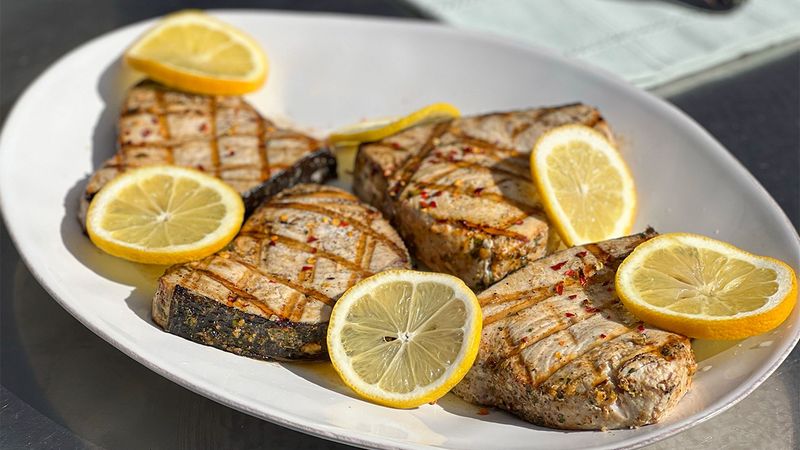
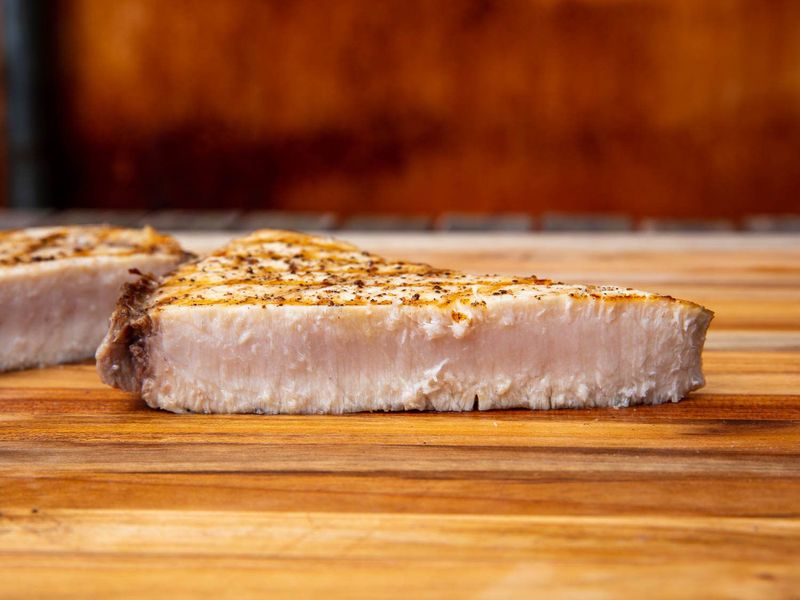
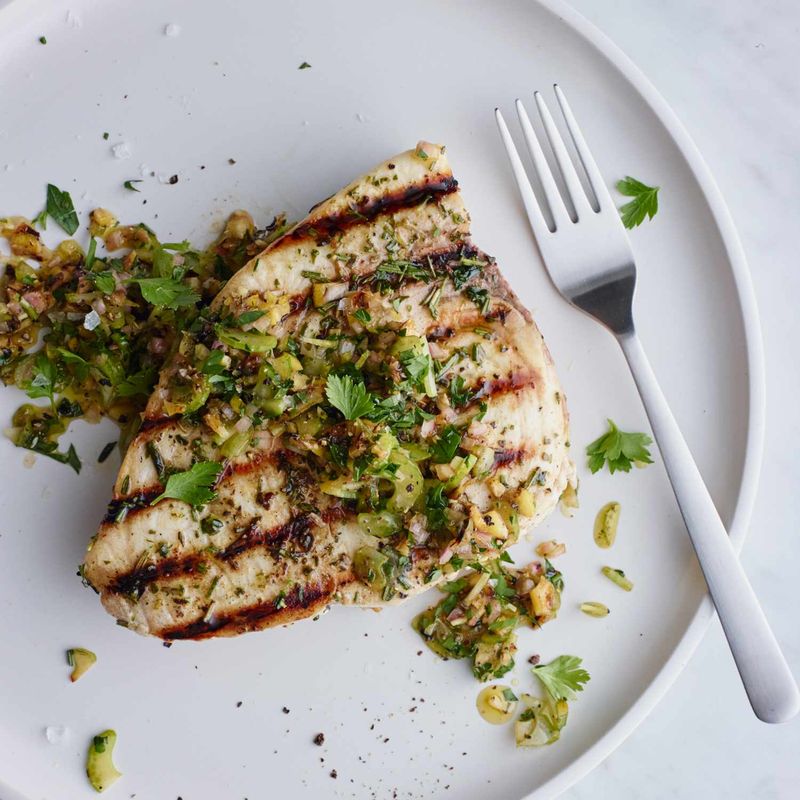
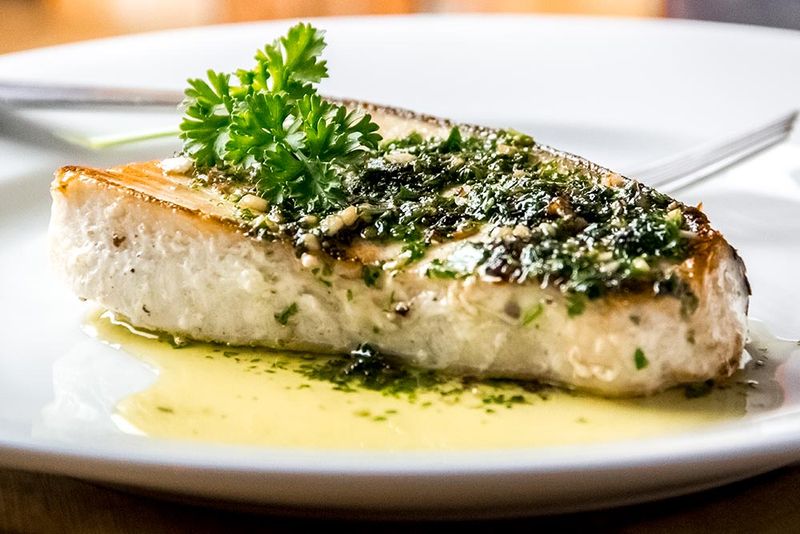
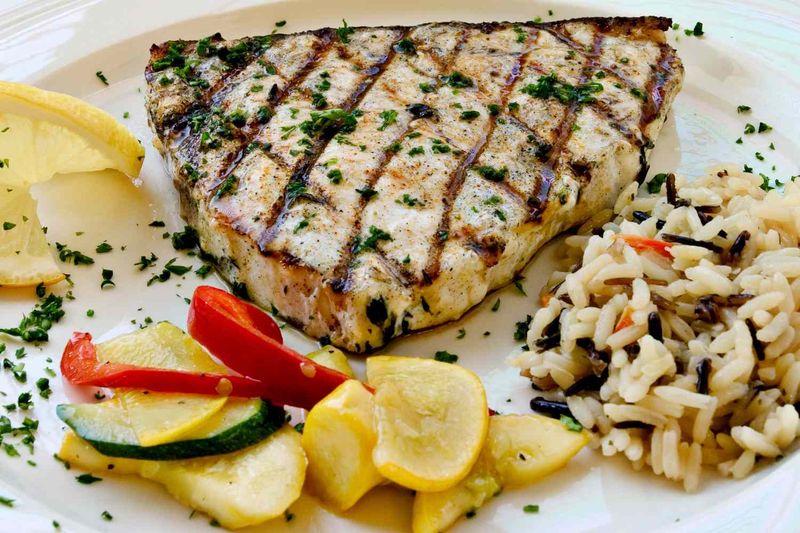
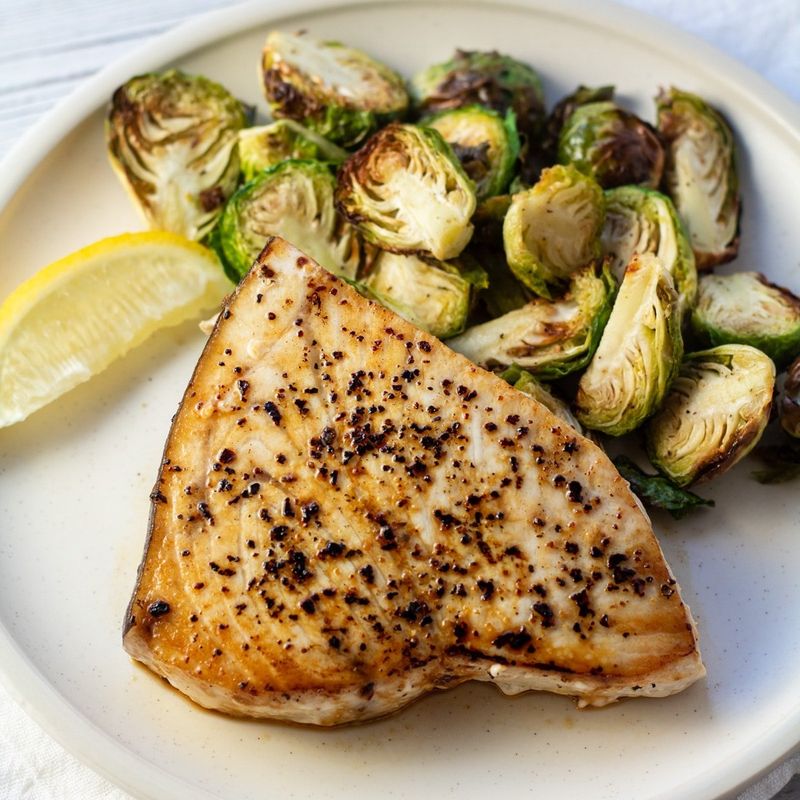
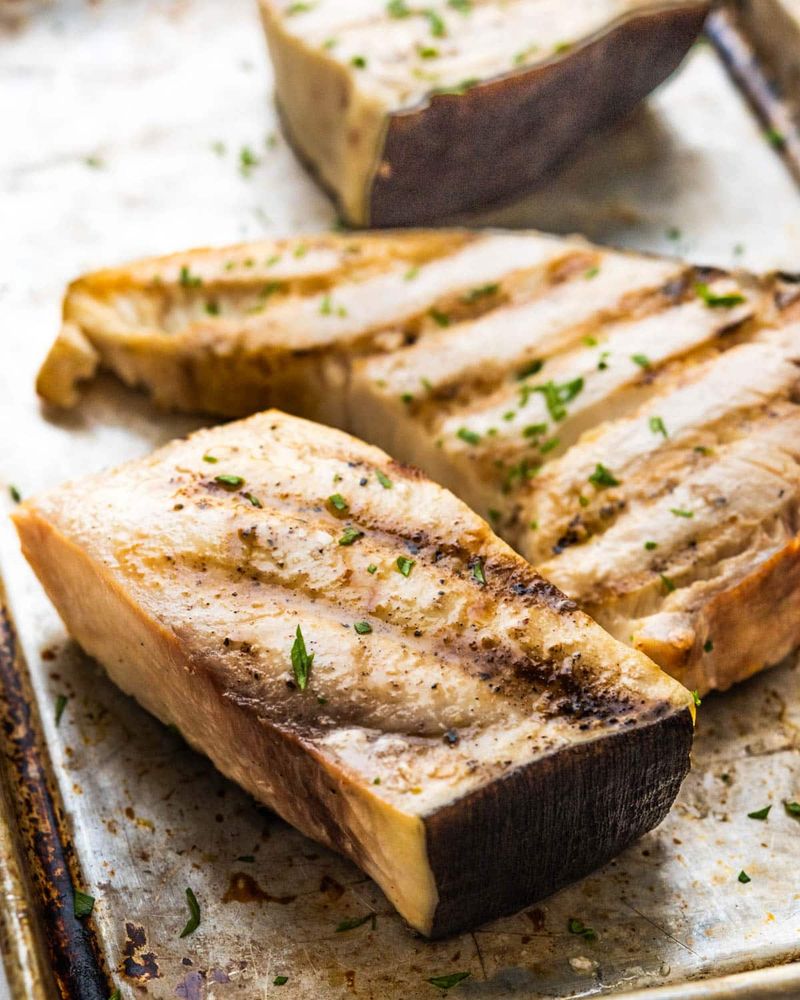
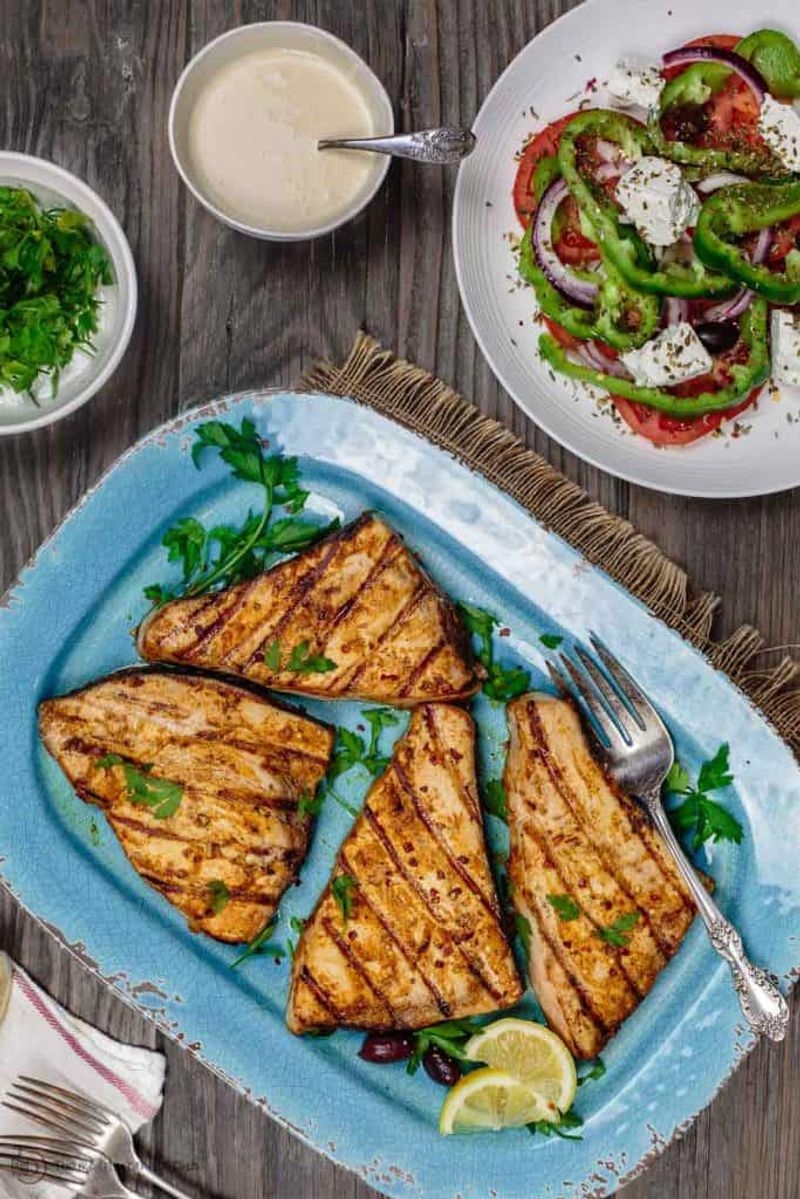
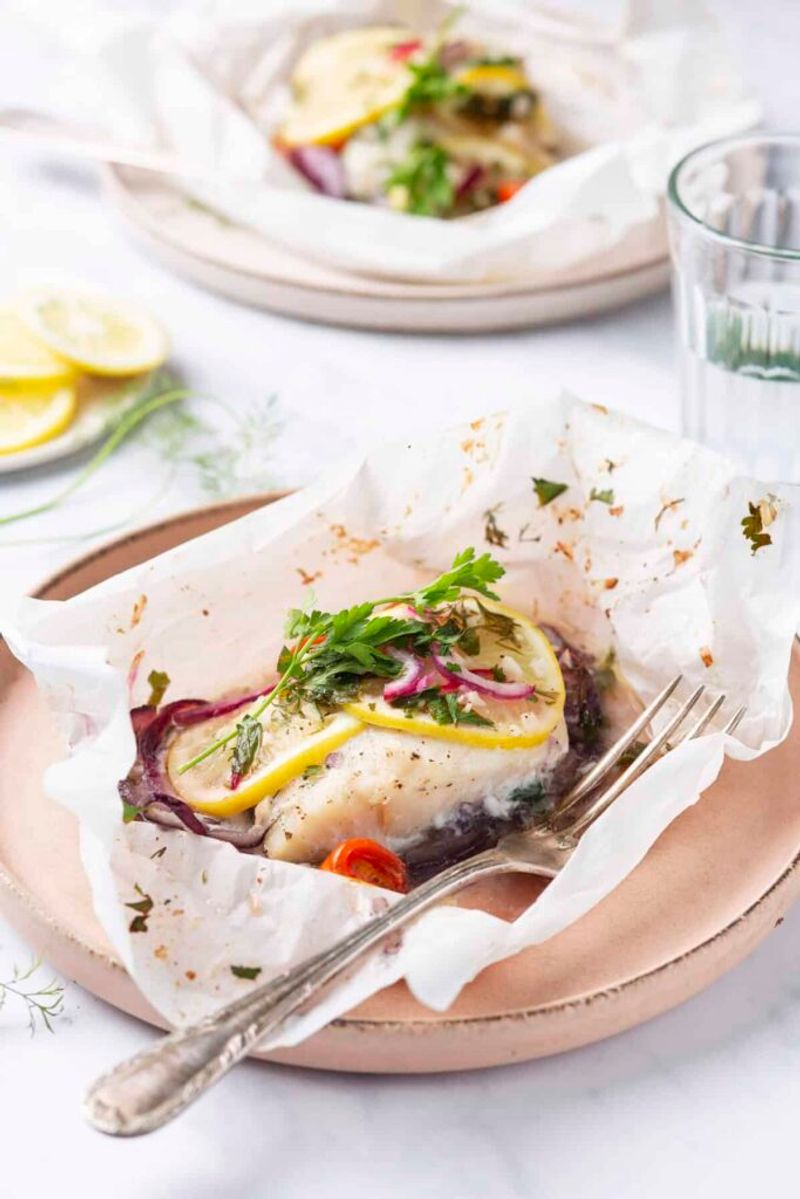
Leave a comment